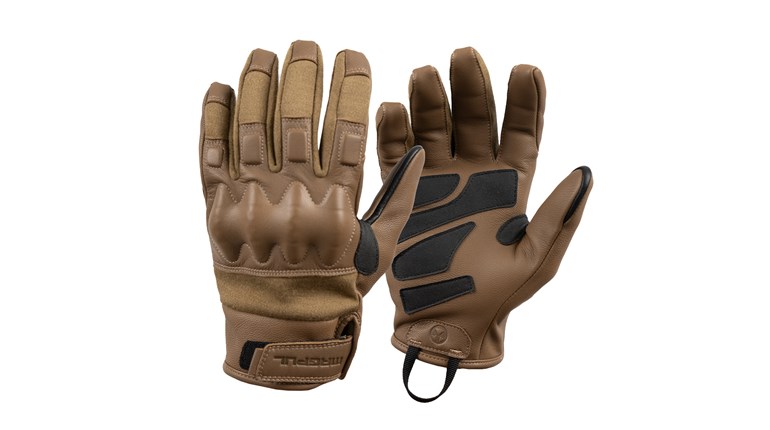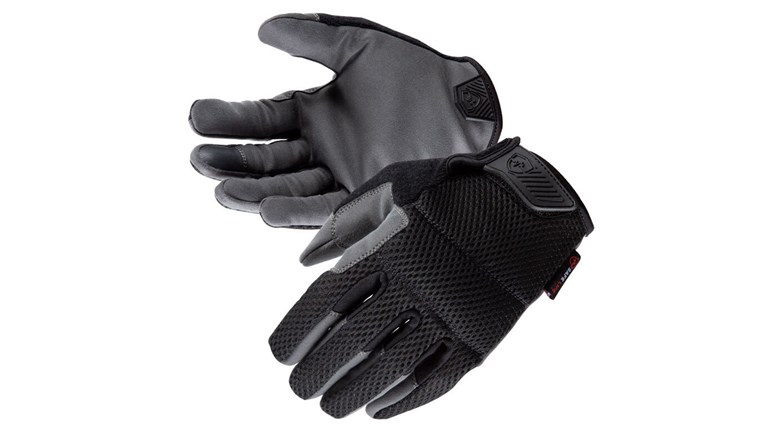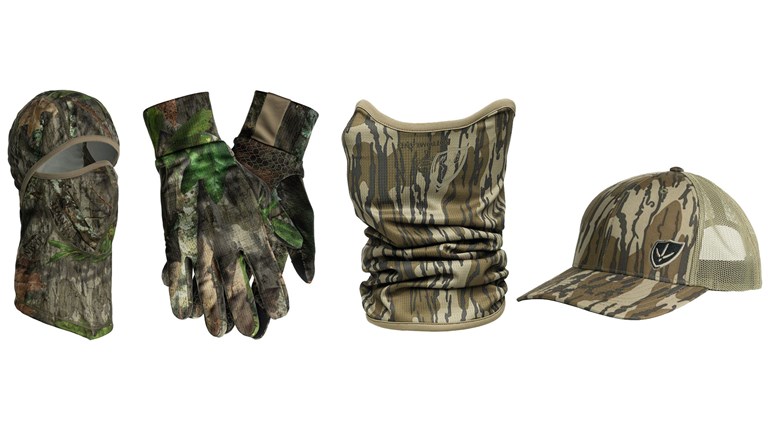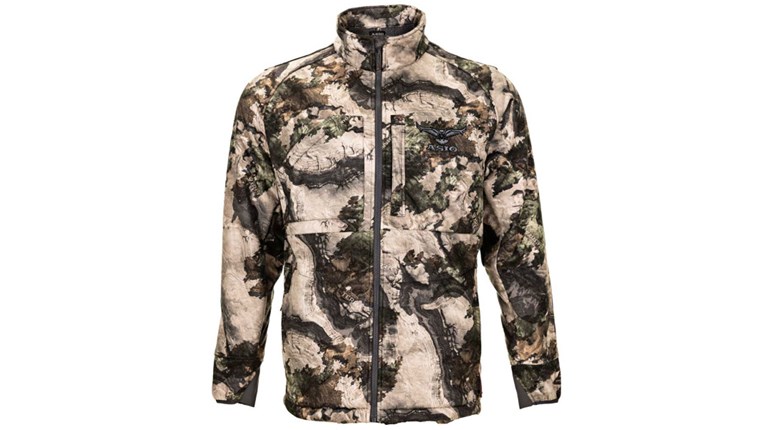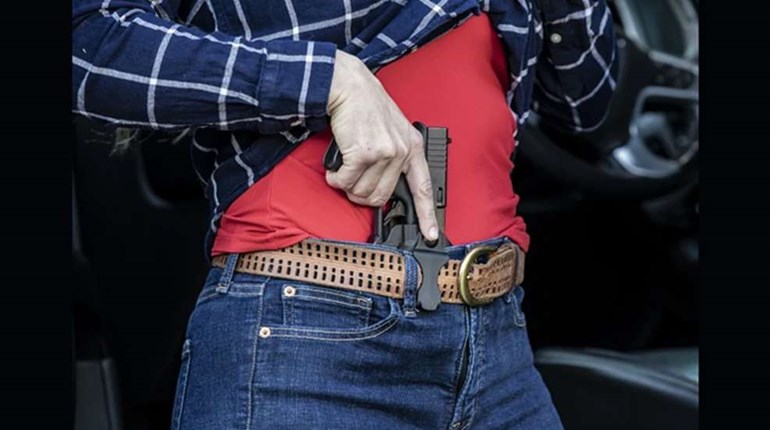
We can’t decide whether it’s a function of age, temperament or some sub-clinical intestinal revolt, but lately our fuse is particularly short for the finger-waggers we seem to encounter everywhere. We concede this may be exaggerated by a thoroughly dyspeptic political season, especially one in which personal security hypocrites seem to be finding endless outlets for their bad-luck-for-you brand of self-serving balderdash.
It’s all the more unpleasant when we have to do the finger-wagging ourselves. But as this issue has obvious Carry Life implications as well as general safety concerns, here we go. We’ll be gentle.
We’re seeing a bunch of shooters using gloves while shooting handguns on the range, and hope they’ve been thoroughly advised about the important upsides and downsides of this practice. In short, you need a really compelling reason to wear gloves. For the most part, it’s far more likely to be a hindrance than a help when mastering a Carry Life-class or even full-size firearm, and several of the possible hindrances are actual threats to firearm safety. In short, you need a really compelling reason to wear gloves. For the most part, it’s far more likely to be a hindrance than a help when mastering a Carry Life-class firearm.
And if you’re doing this because “otherwise, recoil hurts too much,” this is not a sufficient reason. The “why” here is simple: Unless you’re going to wear gloves—and, likely, the same gloves—all the time, your training will not match your defensive shooting circumstances, and substantially increases the likelihood of other problems if you ever have to use your firearm in extremis.
One of the best solutions here is to do things “in order,” particularly for new shooters, and even more so for shooters with smaller or otherwise more delicate hands. Simply don’t buy a pistol first, nor let someone buy one for you (however well-intentioned). Most discomforts with modern pistols in reasonable calibers are ergonomic mismatches, not intrinsic problems. But if a given caliber is simply too much, especially at the beginning, don’t use it. Such problems are far more likely to create unhelpful—or just plain bad—habits that require labored correction later on. That’s gun-writer code for “no fun,” in case you missed the nuance.
A corollary to this is beginning with a firearm that takes any pain out of the equation. Can you say “rimfire”? Keep in mind, however, that this sojourn in Recoil-Free Land should generally be brief. If it isn’t, such soft-running guns risk becoming a permanent expectation, and a stumbling block for graduation to a more reliable defensive/protective power level. (We especially prefer rimfire conversions like these [page 44] from Tactical Solutions because they teach big pistol—maybe even like big pistol—mechanics, thus no relearning is required down the road.)
Nor are more and better “test drives” or rimfire the only answer. Using just any factory ammo isn’t necessarily advisable: We find surprising differences in “oomph” from different vintages of theoretically identical ammunition. Hating on manufacturers isn’t a solution, either, as they sometimes face the same difficult component issues shooters do, just earlier in the supply chain. Any handloader can confirm this: “Feel” can be quite different in ammunition that measures the same over a chronograph, and for a host of technical reasons beyond our scope (for the moment). Recoil tolerance generally improves once the basics are, so to speak, in hand …
The fix? You may have to, er, bite the bullet, and get ammunition like this from Atlanta Arms or another similar specialty maker. It is designed to very exacting and light-recoiling tolerances (“Minor” power factor), and will make almost any quality pistol not only more accurate, but considerably softer-shooting once the jump from rimfire is made. Yes, it costs somewhat more; but if it creates lifetime (good) habits and lets that new shooter discover the joy of mastering their firearm, it is money well spent. Note, too, this money won’t be permanently spent: Recoil tolerance generally improves once the basics are, so to speak, in hand, and then one of two things occurs: Either shooters grow accustomed to factory-like recoil, or they take up reloading. Either is a huge bonus, particularly in the long run.
Another option is grip modification. This may sound comparatively radical, but is not necessarily so. Some of this class of difficulty has been relieved in the past five years with the wide availability of swappable grip panels on almost every top-tier manufacturer’s offerings. That’s a good thing, as far as it goes, even if the swap process is often a little labored or tool-dependent (though not on the Grand Power X-calibur), and it’s hard to remember which one you really liked by the time you get an alternative in place. All the same, it can prove an important, hand-sparing advance.
Then there’s this from Brooks Tactical via Brownells. Do not, repeat, do not underestimate this option. Particularly for many women shooters, this seems heaven-sent. In our experience, it is astonishingly durable, especially if applied carefully (according to the instructions—a radical concept we know, gents). Several years of life under heavy use is typical in our relatively long experience. Again, just because it’s soft, don’t dismiss the Brooks solution, and a wet-handed test will make our point nicely!
To be clear, we don’t inveigh against gloves out of any hostility to bare knuckles (assuming they aren’t approaching our nose at a high rate, that is), but rather because there are legitimate worries about safety and proficiency when gloves are introduced. The first may seem subtle, but is obviously pervasive: At a huge range of temperatures and humidity, nothing easily beats the grippiness and adaptability of human skin, which is why you should practice/train in that natural condition. It’s the same state your hands will most likely be in if the unhappy necessity of defensive shooting arrives.
A second issue we alluded to already: Unless you wear them all the time, gloves introduce “difference,” and of several kinds. Almost none are good. Unlike skin-to-grip contact that provides immediate feedback about grip changes—like degrading contaminants—gloves reduce/impede such a process. Skin also repairs/maintains itself, whereas glove surfaces cannot. Without routine inspection, the gripping surface of a glove can change in a way you can’t detect without careful, routine attention. Making this a habit is suspect. Another subtle consideration is the diameter change gloves induce. Even if very thin, gloves change the “mating” dimensions of you and firearm …
Another subtle consideration is the diameter change gloves induce. Even if very thin, gloves change the “mating” dimensions of your hand and firearm, and thinking this won’t matter geometrically is absurd. An added corollary here—any gloves used in shooting must fit extremely (read “expensively”) well. Floppy excess material anywhere (especially on the index or other firing digit) is an overt invitation to comprehensive disaster.
Most obvious, however, is the fact that gloves make shooting harder for the same reason they are appealing: They are a comprehensive if problematic barrier. As such, they reduce or delay the authentic feedback so crucial to acquiring any complex manual skill. This interference is a timely metaphor: whether it’s personal security, or a constitutional liberty, the interference adds no value, perhaps even very real danger. Why do it?
Is there no good reason to wear gloves? Of course not: vehicle and aircrew are obvious though limited exceptions, as are some law enforcement tasks/roles. The requirement that they must protect their hands from damage by fire or other risks outweighs the likelihood they’ll need to use their sidearm, and these legit priorities trump our worries. Injury or other temporary deficit can make them a necessity, too, and we’d argue that continued practice is preferable to protracted layoff if gloves will solve the problem. Winter conditions, naturally, are a rational raison d’têre.
So as a matter of course, we can’t recommend hand gunning with gloves. We hope it is clear that their problems are usually greater than their benefits. But if you believe you must use them, the obligation to train to the changed shooting conditions they enforce are on you.
Now Carry on.












